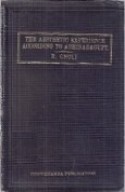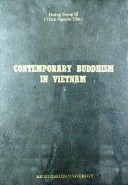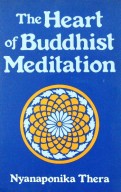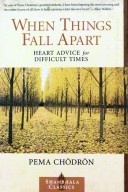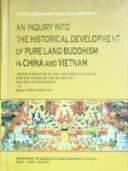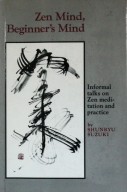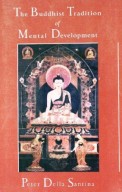The Aesthetic Experience According To Abhinavagupta
PREFACE
The commentary by Abhinavagupta on the famous sũtra by Bharat a, vibhãvãnubhãvavyabhicărisaniyogãd rasanispattih (Nãtya Sãstra, VI, prose after V. 33) constitutes the most important text in the whole of Indian aesthetic thought. It forms part of the Abhinavabharatĩ, the commentary written by Abhinava Gupta on Bharata’s Nafya Sãtra). Apart from the teaching of Abhinavagupta, which is given its most lucid expression in these pages, this work is particularly valuable in that it contains a summary of the principal theories on poetics enunciated by the predecessors of Abhinavagupta, whose works have been lost or have not yet come to light.
A great part of later Indian poetics draws its’ inspiration, in the matter of aesthetic experience, from this commentary. The 4th Chapter in Mammata’s Kãvyaprakãsa—and, by implication, all the works that stem from it—is nothing but an epitome of it. The commentary (viveka) added by Hemacandra, the great Jaina poligraph (12th century), to his own Kãvyãnusãsana reproduces it word for word (except for a few variations). While Mãnikyacandra (13th century) in his commentary on Mammata’s Kãvyaprakãsa does no more than copy and simplify, at the very most, the viveka of Hemacandra.
Abhinavagupta’s commentary was edited for the first time by S.K. De. This edition is full of mistakes and, in many places, is completely incomprehensible.
It was also published a second time in Kavi’s edition of the Abhinavabharatĩ. This edition represents, undoubtedly, a notable advance on that of De. Nevertheless, it contains many mistakes.
Another edition, in which a great part of Abhinavagupta’s commentary is reproduced, is that of the viveka added by Hemacandra to his Kãvyãnusãsana. Mãnikyacandra quotes several passages from this viveka in his Kãvyaprakãsasamketa.
Certain passages of Abhinavagupta’s commentary are quoted with corrections that are not always very happy in the Sanskrit appendix to K. Ch. Pandey’s book, Indian Aesthetics (Banaras 1950).
My edition is based, in the main, on that of the Abhinavabharatĩ and on Hemacandra’s viveka. Abhinavabharatĩ’s edition was prepared from several manuscripts all of which were fragmentary. The edition of Hemacandra’s viveka—which is nearly always correct—has allowed me to reconstruct, with certainty, several passages whose meaning seemed to have been hopelessly corrupted. In the critical apparatus I have quoted the following readings:
D: the edition of S.K. De.
G: Kavi’s edition of the Abhinavabharatĩ.
H.C.: the edition of the viveka by Hemacandra.
M.C.: the edition of the Kăvyaprakãsasamketa by Mãnikyacandra.
P: the passages quoted by K. Ch. Pandey in his Indian Aesthetics.
Where I was in doubt, I have given the preference, in general, to the reading accepted by the Abhinavabharatĩ’s edition. I have not quoted the many places where I have made changes in punctuation of the earlier editions. These changes speak for themselves.
Until new manuscript material in a better state of preservation than that available at present has been found, the collation of the fragmentary and often corrupt MSS. now in existence can only be in my opinion of scant help in re-establishing the doubtful passages. It can only confirm the readings accepted by M.R. Kavi. For this reason, I have preferred to put my trust above all in the data handed down by tradition and accepted in other works and in a critical study of the text itself.
It is not improbable that a few passages were added to the text under the influence above all of Hemacandra. The original form of the text is probably that published by S.K. De. In his edition certain minor passages, are omitted and the first words only of some stanzas appear. The object of these additions was to complete and elucidate certain passages. They do not alter in any way the thought of Abbinavagupta. I have therefore considered it best to leave them in the text.
In the notes to the translation—the first to appear of these pages—I have sought to justify my interpretation of all the most difficult points and to give an explanation of the concepts involved quoting such texts as appeared to me of value for the understanding of the passages in question and, thus, of the aesthetic thought of one of the most profound and keenest minds that India has ever known.
As to the brief introduction, I have confined myself to discussing the most salient points of Abhinavagupta’s thought.
The language used by Abhinavagupta is a splendid example of erudite mediaeval Sanskrit. In comparison with the same author’s philosophical works, there is to be found in these pages a more studied elegance, both in the choice of words and in the structure of the sentences (cf., for example, the abstract nouns ending in iman, which have a literary and poetic resonance, used twice by Abhinavagupta in this commentary: katukiman, p. 20, and sabaliman, p. 22).
I owe a profound debt of gratitude to Prof. Giuseppe Tucci for his innumerable acts of kindness, encouragement and advice. He allowed me free use of his precious library and read with me the proofs of text and translation. His assistance in helping me to solve some difficult points was invaluable.
I would also like to thank most particularly Prof. T.R.V. Murti, of the University of Benares, who has very kindly given me the benefit of his experience and learning.
Raniero Gnoli.
July 30, 1956.
CONTENTS
List of Abbreviations………………….. xi
Preface……………………………………… xiii
Introduction………………………………. xix
Text…………………………………………. 3
Translation……………………………….. 29
Appendix I………………………………… 106
Appendix II………………………………. 109
General Index…………………………….. 225
 Facebook
Facebook
 Google
Google
 Google+
Google+
